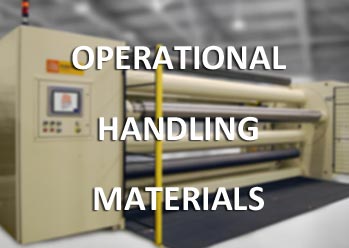

November 9 2022

You’ve chosen a manufacturer for your new web handling equipment, and you’re eager to get started with the process. But, before you move forward, there’s one important part of the project that cannot be overlooked: communicating exactly how your machine will be used, and your expectations of its performance.
There are three types of specifications your machine builder must know before they can accurately build a custom-engineered or even a standard machine:
Operational. How will the machine be operated once it’s installed? For example, how often and what method do you intend to use for threading-up the machine? It is often found that operational practices that have been used for decades are no longer permitted due to current machine safety regulations. Alternative methods must be considered that ensure operator safety, and meet your production goals.
Handling. In the case of a winder, it’s important to know how the finished rolls of material will be handled (e.g. overhead hoist, forklift, cart, or other). This can dictate the design of the machine; not only with respect to accommodating the preferred handling method within the confines of the machine, but also with respect to planning the space requirements surrounding the machine upon installation in your facility.
Materials. This is probably the most mission-critical specification. Your machine builder will need to know all of the materials that will be run on the machine. If the builder is under the impression that only a few types of materials will be used, they will build a machine to handle only those types of materials and may overlook some important design requirements.
Ideally, samples of all materials to be processed in their finished form should be provided to the manufacturer for evaluation before the machine is even quoted. Providing the specifications of the cores is just as important, including the core materials and sizes. For example, if you require the core to extend from each end of the finished roll for subsequent handling or packaging, this needs to be communicated to the manufacturer as it may impact the overall size of the machine.
The bottom line: up-front communication with your equipment manufacturer is absolutely essential. Given complete and accurate specs, your manufacturer can design and build a piece of equipment that lives up to your performance expectations and becomes an asset to your business.